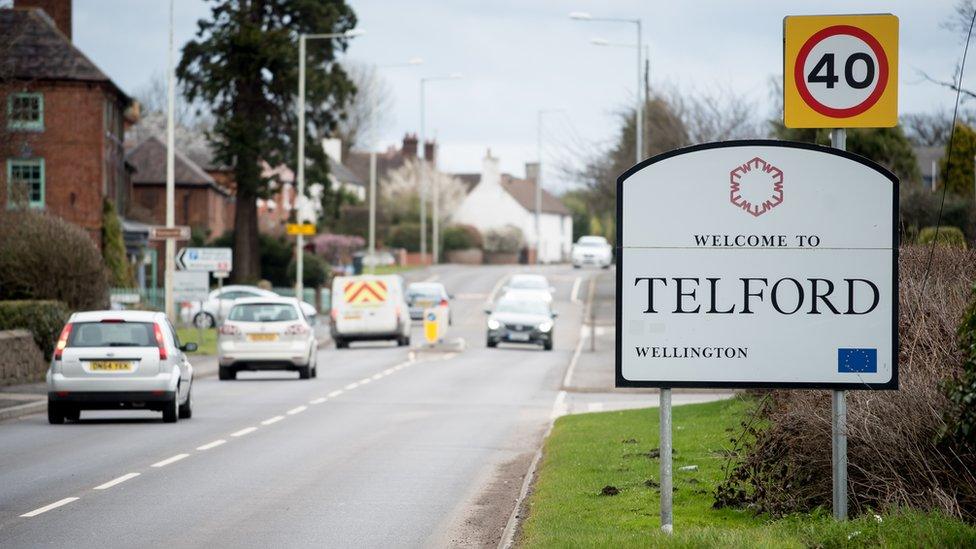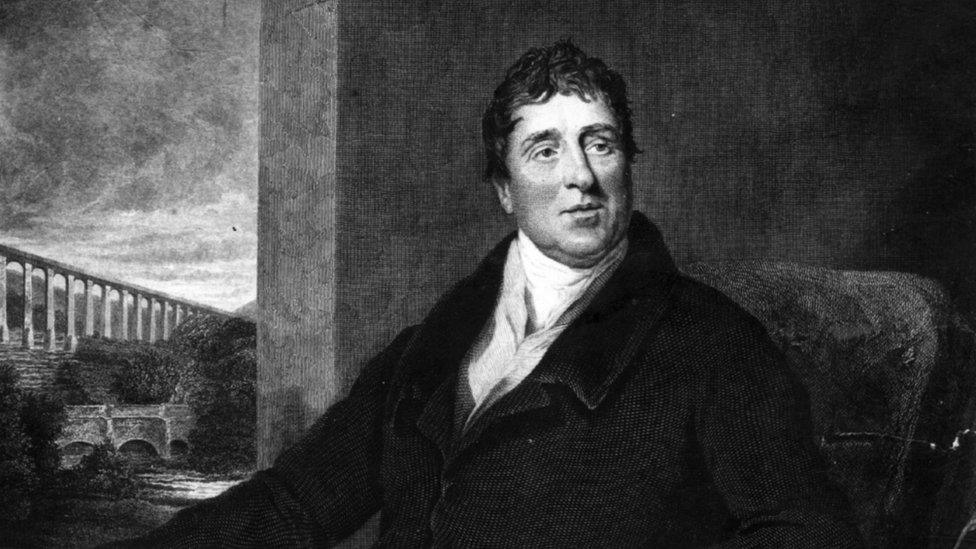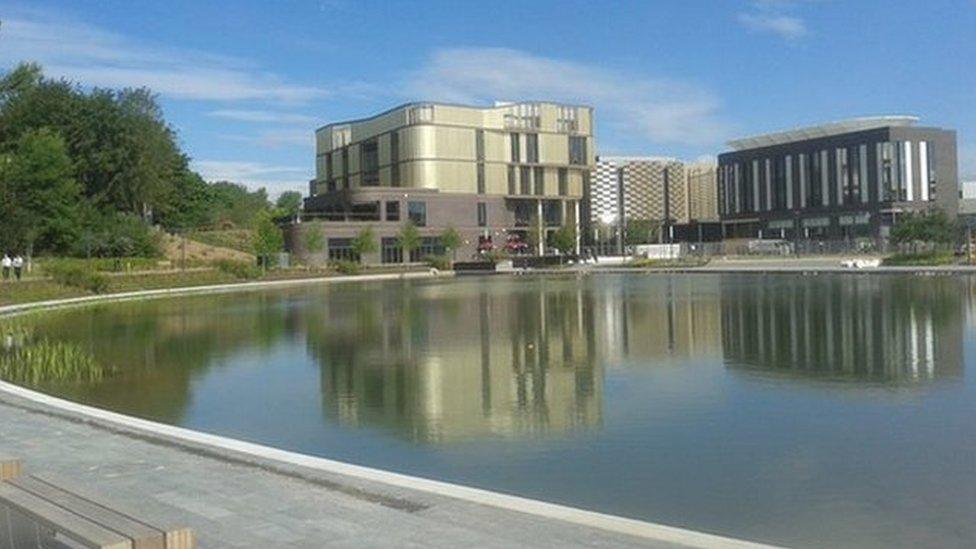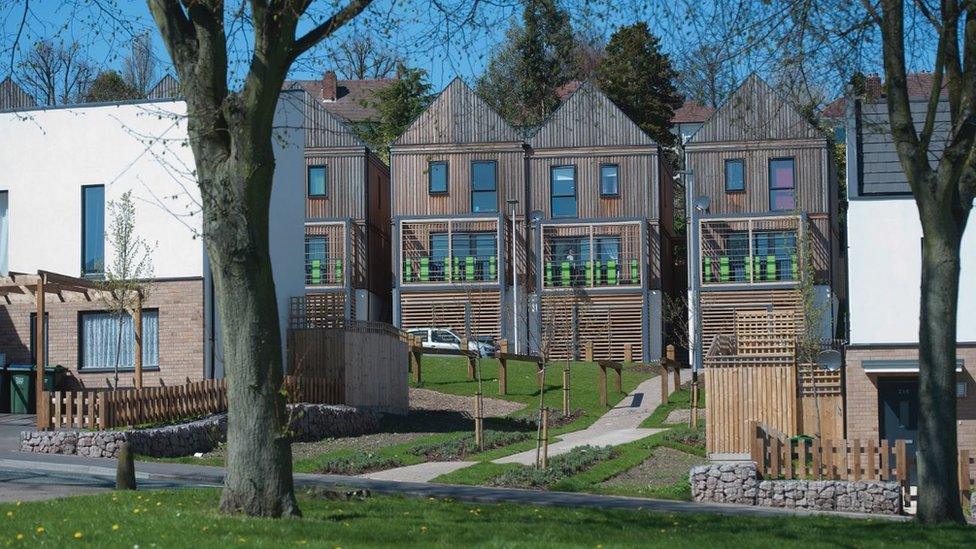Telford is 50 years old: so is it still a new town?
- Published

Telford turns 50 this year
When is a 'new town' not a new town?
If one possible answer to this question is "when it's 50 years old", then Telford in Shropshire is indeed no longer a new town. But, fundamentally, it always will be. It was part of the post-war reconstruction of Britain which saw a succession of ambitious "overspill" towns built from scratch in predominantly rural, or semi-rural, areas, but also embracing market towns: in Telford's case, places like Dawley, Donnington, Hadley, Ironbridge, Madeley, Oakengates and Wellington.
One of their principal aims was to offer clean, attractive new environments in which to offer affordable, up-to-date accommodation for the mass re-housing of city dwellers, paving the way for the urban slum clearance programmes. This explains why Telford is where it is - 30 miles north west of Birmingham and 19 miles from Wolverhampton.
The first generation of new towns came during the years immediately after the war. Along with Redditch in Worcestershire, Telford was part of a second wave which began in the early 1960s. Initially conceived as Dawley in 1963, it eventually came into being as the significantly larger Telford five years later; hence the flurry of 50th anniversary celebrations which reach their peak during these sunniest of midsummer days.
It was named after the legendary road builder, civil engineer and architect Thomas Telford. Contrary to popular belief, he was not responsible for the world-famous iron bridge, which gave its name to the World Heritage Site beside the River Severn. But he was appointed Shropshire's Surveyor of Public Works in 1787, which still just about qualifies as a good enough reason to name the town after him!

Telford was named after Scottish road engineer and architect Thomas Telford
Is Telford working?
Numbers don't always tell the whole story. But they do give a generally positive impression of Telford's performance since those early days.
At its inception in 1968, its population was just under 75,000. By the time of the 2010 census, that had more than doubled to around 155,000. The Office for National Statistics projects it to increase by a further 40,000 over the next 23 years.
Having started out with a higher than average unemployment rate, Telford has since witnessed the arrival of major American, European and Japanese businesses: notably Hitachi, Denso, Maxell and Ricoh. Together they brought in thousands of high-technology jobs while the neighbouring Birmingham and Black Country conurbation was still rooted predominantly in traditional metal-based industries.
Equally, there is no disguising the scale of the challenges the town has faced along the way.
Sixteen years ago, the Commons select committee for transport, local government and the regions reported on new towns in general, but this could could easily have been about Telford in particular:
"While many new towns have been economically successful, most are now experiencing major problems. Their design is inappropriate for the 21st century. Their infrastructure is aging at the same rate and many have social and economic problems...
"The new towns are no longer new and many of the quickly-built houses have reached the end of their design life. The master-plans dictated low density developments with large amounts of open space, and housing segregated from jobs, shopping and business services. These created car dependency and are now not considered sustainable. Low density developments are expensive to maintain. Roads and sewers are in need of expensive upgrades."

Telford's Southwater development opened in 2014
Not just the roads and sewers, either.
One very "expensive upgrade" in Telford is the updated and up-rated Southwater Shopping complex, a £250 million public-private partnership which opened in 2014. Comprising not just retail, but also restaurants, cultural meeting spaces and an IMAX cinema, it's designed for the new era of "destination shopping" in the hope that it can avoid the fate of so many unreconstructed town centres as the "crisis in the High Street" continues to take its toll. Already there are signs that the lure of Telford is putting a squeeze on Shrewsbury's town centre 15 miles away.
New 'new towns'?
What are the chances that the new town is a concept whose time has come again?
It didn't look that way a decade or so ago when the Middle Quinton just outside Stratford-on-Avon was one of 10 so-called "eco towns" proposed by the then Labour Government. The environmental packaging failed to persuade people in neighbouring towns and villages and the entire project was abandoned after a storm of angry protest marches across the green fields of Warwickshire.

The Canal Quarter in Wolverhampton has been earmarked as part of the Black Country Garden City project
But now, just down the M54 from Telford in the Black Country, the UK's biggest-ever regeneration of brownfield sites is taking shape. The Black Country Garden City is due to deliver 45,000 new homes by 2025. Led by the Black Country Consortium, comprising the four Black Country councils, Local Enterprise Partnership and the Homes and Communities Agency this, again, is a public-private partnership on a scale which certainly does not lack for ambition.
During an extended report from Telford in this week's Sunday Politics Midlands, we'll be asking the town's Conservative MP Lucy Allan where she thinks it's done well and where it could still do better.
We'll be joined in the studio by Philip Dunne, Conservative MP for neighbouring Ludlow, and by Neena Gill, Labour MEP for the West Midlands region as a whole.
And I hope you will join us too. That's Sunday Politics Midlands on BBC One at 11.00 BST this Sunday, 8 July 2018.
- Published13 March 2016
